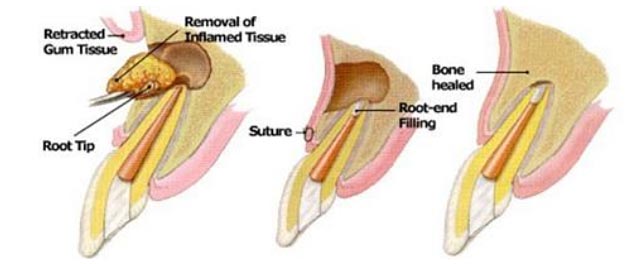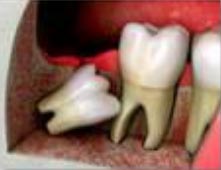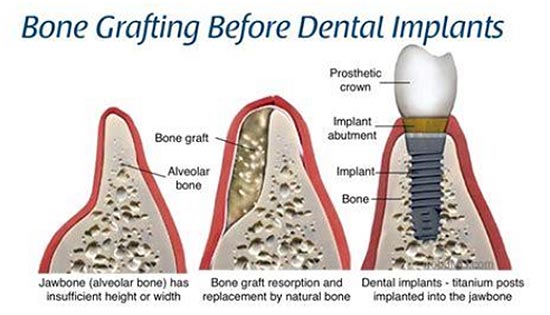Apicoectomy
When to consider apicoectomy
Sometimes, when a root canal is treated, a small portion of nerve tissue and bacteria might remain unextracted and develop an infection. Even though a second root canal treatment is often preferred, if the infection is severe, apicoectomy (removal of the tip of the root) might be the only way to save the affected tooth.
The procedure can last anywhere from 30 to 90 minutes and can be done by traditional surgical technique or it can involve using a special microscope and ultrasonic tools. It begins with an incision to the gum to expose the affected root/cyst. The dental surgeon might have to use a drill to access the area. Next, the infection is thoroughly cleaned and the top few millimeters of the root are resected, after which the now clean area is filled, eliminating the possibility of a further infection, thus saving the tooth.
Apicoectomy procedure
Apicoectomy is generally performed under local anesthesia and includes:
- Incision of the gum above the tooth with the infected root
- Cyst curettage and removal of the root tip
- Root canal filling
- Gum suturing using stitches which spontaneously dissolve within 10 to 21 days

Impacted Tooth
What is an impacted tooth?
 If a tooth doesn’t erupt (or emerge) fully and properly through the gums, it’s considered to be impacted. This can happen for various reasons. Many cases of impacted teeth are asymptomatic, but in most cases gum swelling and pain are present. Partially erupted teeth might also trap food and other debris, causing infection and decay of the impacted tooth and the surrounding tissue. Impacted teeth might also exert pressure on the surrounding teeth, causing ‘overcrowding’ and bite misalignment.
If a tooth doesn’t erupt (or emerge) fully and properly through the gums, it’s considered to be impacted. This can happen for various reasons. Many cases of impacted teeth are asymptomatic, but in most cases gum swelling and pain are present. Partially erupted teeth might also trap food and other debris, causing infection and decay of the impacted tooth and the surrounding tissue. Impacted teeth might also exert pressure on the surrounding teeth, causing ‘overcrowding’ and bite misalignment.
Surgical extraction of impacted teeth
Impacted wisdom teeth (third molars) are very common and are treated with a standard surgical extraction and subsequent curettage if there’s inflamed tissue present. Usually, the procedure is performed under local anesthesia and recovery lasts approximately 3-5 days.
Dental Bone Grafting
Bone grafting for dental implants
Every tooth extraction is associated with some amount of jawbone tissue loss. Dental implants are a safe and long-term solution for restoring missing teeth. However, in many cases, the present jawbone structure isn’t capable of supporting the implant and holding it in place. The jawbone might be too thin or the loss of bone tissue might be severe enough to warrant bone grafting before an artificial root can be implanted.
Until recently, without bone grafting, patients whose jawbone has suffered severe enough retraction due to loss of teeth, weren’t able to get dental implants and vastly improve their quality of life. Even long-time denture users suffer a bone loss over time and develop difficulties in getting their dentures to fit. Additionally, jawbone retraction can lead to structural changes of the face.
The bone graft is an act of increasing the volume of the bone which is the most often performed in order to allow the implant placement. The most common types of bone grafts are:
- Autologous- where the graft material is taken from a patient’s own bone
- Alloplastic- where the graft is made from hydroxyapatite – synthetic bone granules
This procedure itself takes from 45 minutes to 3 hours and is generally performed under the local anesthesia.The healing time after bone grafting is about 3-9 months and afterward, the implant placement can be performed.
If the bone loss wasn’t significant than is possible to perform the bone graft at the same time as an implant placement.

Frequently Asked Questions about Dental Surgery Treatments
Apical resection treatment
Apical resection is a standard surgical procedure to remove an infectious process around the root of the affected tooth. Apical resection involves slicing away the tip of the root and removing the infection around it. Then, the affected area is cleaned and sealed to prevent further infections.
Yes. The procedure only differs depending on the anatomical structure of the root, relating to the jaw bone.
Apical resection is performed in order to save the tooth. The reason why dentists stress the importance of adequate oral hygiene and regular dental checkups is to save the tooth because no implant or crown or false tooth will ever be as good and strong as a healthy, natural tooth.
The surgery is performed under local anesthesia. The patient won’t feel any pain and can cooperate with the surgeon during the procedure.The surgery is performed on the dental chair in a sterilized atmosphere, with sterilized tools and equipment.
The surgery involves removing the tip of the affected root, in order to reach the sight of the infection. The infected tissue is completely removed. The resulting gap is occluded and ozone-treated in order to obtain full aseptic zone.
As the infectious process destroys the surrounding bone tissue, its removal may leave behind a large gap. In this case, we resort to the addition of artificial bone structure or bone tissue-growing stimuli. The wound is then sutured with dissolvable stitches which disappear spontaneously in 10-21 days.
Avoid eating any hard foods for a period of 10 days and maintain adequate oral hygiene alongside the prescribed antibiotic/anti-inflammatory regimen. If the post-surgical pain persists for several days after the surgery, contact your dentist.
Impacted tooth
Impacted wisdom teeth don’t always cause symptoms. However, when an impacted wisdom tooth becomes infected, it can damage other teeth and cause other dental problems. Red, swollen bleeding gums, swelling and pain in the jaw, bad breath or taste – are some of the signs and symptoms of an infected impacted wisdom tooth.
Consult your dentist if you experience the aforementioned symptoms in the area behind your last molar, which may be associated with an impacted wisdom tooth.
It is possible for an impacted tooth to be infected, but not all impacted teeth are infected. Infected impacted teeth can cause major health problems. Most impacted teeth are third molars otherwise known as wisdom teeth. Any tooth can get infected, visible or not.
If the impacted teeth don’t cause any problems, it may never require a treatment. If it causes discomfort, pain relievers may help, but tooth extraction (tooth removal) is most common treatment method for an impacted tooth, performed by an oral surgeon.
Bone Grafting
A dental bone graft is a surgical procedure that involves building up the jawbone by attaching a section of bone donated from another part of the body or the jaw itself. Grafting is used to create a stronger jawbone foundation in preparation for dental implant surgery. When a patient visits an oral surgeon for dental implants, dental bone grafting might be necessary if the jaw is too thin or otherwise compromised.
If this procedure is necessary, the surgeon generally takes synthetic bone and inserts it into the affected area of the jaw. It takes approximately 6 – 9 months for the bone graft to fuse with the jaw bone in order to support an implant.
Bone grafting can help dental specialists add width or height to the jawbone in order to repair the damage from a tooth loss.
Dental bone grafting has a very high success rate and this type of grafting is often used when there’s a significant jawbone loss or when the patient is getting dental implants.
If the jawbone is too weak and a dental implant surgery is performed, the jawbone will not be strong enough to withstand the pressure exerted by chewing and will not support the implant.
In cases where massive dental bone graft surgery is required – it involves cutting a piece of bone from another part of the body, and implanting it into the jawbone which is not a case in medium or small bone graft surgery. Massive dental bone grafting is typically performed if the jaw is too soft or not thick enough to support dental implants. The graft usually takes 6 – 9 to fully fuse with and strengthen the surrounding jawbone.

